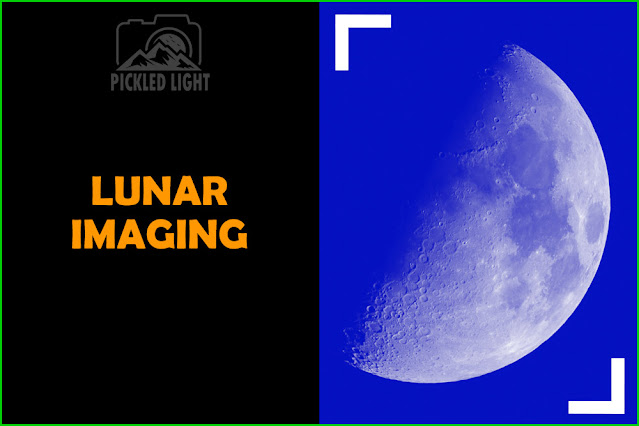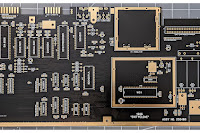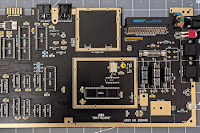
I write these articles for two simple reasons. Firstly, the subject interests me. Secondly, it’s a diary of learning which I can refer back to as required and it’s published on this site in the event anyone else may benefit from that. This article is no different and here I’m going to look at how make a lunar image to be proud of.
According to NASA, the Moon is 238,855 miles (384,400 kilometres) away from Earth. That’s an average figure. The Moon’s orbit around the Earth is not a perfect circle so when it’s at its furthest point, called the apogee, it’s 252,088 miles away and when it’s at its closest point, the perigee, it’s 225,623 miles away. By all reasonable thinking, that’s a long way, and yet we can see it clearly, sometimes even in daylight, given favourable conditions. That’s because, with a diameter of 2159 miles, it’s a fairly substantial object. No matter where we are on Earth, it appears roughly the same size to our eyes. Deceptively, though, the Moon takes up very little space in the sky. It may come as a surprise but if you were to draw an imaginary circle in the sky right around the earth and divide that into 360 equal degrees, the angle of the Moon would only fill half a degree (there are 60 arcminutes in a degree and the Moon is 31 arcminutes wide). It’s not actually as big as our eyes make it seem, and if we try to discern much detail with unaided sight, especially from our light polluted towns and cities, we really are going to struggle to see much more than the largest craters, the dark patches (called mare or the plural maria – latin for “sea” or “seas”) and the lighter patches (highlands).
With reasonably economic camera gear, it’s very possible to see a lot more than this, and it’s a perfect winter project when the skies are clear and not subject to quite the same amount of atmospheric turbulence.
Before I start, I need to talk about focal length. If you want to discern any greater detail in the Moon, then you are going to need some fairly high focal lengths. Let’s first examine what you can see of the Moon with an APS-C camera from 10mm, all the way to 600mm.
I think we can agree then, if my purpose is simply to take a detailed picture of the Moon with standard camera gear, then I first need to have the largest focal length I can get. At 10mm the Moon is just a barely visible speck. And, unfortunately, a standard kit lens is just not going to cut the mustard. 18-55mm is going to be no clearer than the 50mm picture above which renders an image too small to see much detail – it’s really no better than what you can see by eye when viewed at 100%. Even at 600mm I’m still going to have to crop the final picture to really improve on things! This is why those who are serious about astro-photography spend a great deal of extra cash on telescopes and specialised equipment to really push that magnification (a financial black hole I have, for the most part, avoided)
Let’s see what can be done, however, with a modestly priced 600mm zoom lens, a sturdy tripod, a cheap shutter release cable, a clear night, and some free software.
Now, some will say that what I’m about to do requires a tracking mount, sometimes referred to as a star tracker. This is completely untrue, as I hope to demonstrate. A tracking mount, in case you want to know, is a specialised electric motor that counteracts the movement of the Earth; as the Earth turns on its axis, the stars and Moon appear to move across the sky. This is called the sidereal rate. A tracking mount counteracts the sidereal rate and ensures the camera will be pointing at the same objects in the sky for an extended period of time. The more expensive the tracking mount, the better it will track and the longer you can make an exposure. No such luxury here. And some very clever software means that this really isn’t necessary for what I want to do.
The second thing to know is that I’m not just going to be taking one picture of the Moon and working with that. I can greatly improve on clarity and reduce image noise by taking lots of pictures, and “stacking” them, much as I did in this earlier article. By doing this, the software can analyse all the different pictures and by averaging out the data between them all can enhance real detail, and remove camera artefacts such as noise.
So, with a clear night and my camera and 600mm lens secured to a sturdy tripod, I began the process. First things first, obviously, was to locate the Moon. This is where the flip screen on my camera comes into its own and I can very comfortably point the camera pretty much straight up and comfortably position the screen so that I can see what’s going on. Without a flip screen I would be somewhat hunched uncomfortably for this part of the process – of course it’s not a problem if you don’t have a flip screen on your camera, it just means you’ll have to contort yourself a bit.
I didn’t want to centre the Moon in the field of view – as I take pictures over two minutes the Moon will appear to move across the screen.
 |
| Movement across the field of view over two minutes |
I wanted to give the Moon room to move but still stay within the frame so I kept the Moon slightly to the left of the frame knowing it would appear to move to the right as the minutes pass. I was in manual everything – both focus and exposure. As you can see, I had plenty of space to play with and even though the Moon has drifted right and down, because I'll be cropping later this doesn't matter.
Now, the Moon reflects sunlight and because the regolith (a fancy word for dirt) of the Moon is a pale grey it reflects a lot of sunlight so consequently the Moon is reasonably bright. I was able to have a reasonably high shutter speed, low ISO and smaller aperture so I sat around 1/125th of a second, ISO 100, f/8. Different lenses and cameras will give different results but on this occasion those setting gave me a perfect histogram – a nice number of highlight pixels (but none straying into white) and a good amount of black because at those settings there was no hope of discerning any other objects in the sky. If you are interested, I provide an explanation of the histogram here. The low ISO would minimise noise for a cleaner end result and the fast shutter speed negated any need to worry about tiny camera movements. Oh, and for optimum results, I always shoot in RAW.
Then to refine the focus. This is perhaps the most important part to get right and unfortunately it isn’t always as easy as it sounds – in Live View I always zoom in to focus but even on a reasonably sturdy tripod the very act of turning the focus ring causes the image to dance around the screen pretty wildly so it’s a case of making small adjustments to focus, then waiting for the image to settle, then adjusting some more and so on until I’m happy. Also bear in mind I’m looking through approximately 300 miles of Earth’s atmosphere as well which causes the image to appear to shimmer (this turbulence is generally worse in summer than winter but is almost always present to some degree) and this can affect whether I know if I’ve achieved focus or not. Persistence and patience are key here. If you do not get sharp images, the rest of this process is an utter waste of time so if it takes 10 minutes or more to nail it, then so be it. Of course by now the Moon has moved from its position on the left of my image and so I need to recompose before beginning.
As I said above, I was using a shutter release cable to control the picture taking, and by setting the camera to take “continuous” pictures, as long as the button on the release is locked down it will keep taking images until the battery runs out or the memory card fills up. As I was only taking pictures for a few minutes though, that was not going to happen. Really, the more pictures you take, the better the final output will be. There may be a point where it doesn’t really matter because there is no detail left to extract, but I’ve not experimented enough to know where that point is so I just take as many pictures as I can whilst I know the Moon is still in the frame. That worked out at around 250. These are my “light frames”. If I was using a 400mm lens, I would have a bit more room to play with and could take more but the 250 I get are more than enough to work with and get a very pleasing result. If I wanted to reframe and get more pictures, so long as I didn’t change the focal length, that would work out too. For the very best of results I should have taken a number of “dark frames” – these are pictures with exactly the same settings but simply with the lens cap on. This improves the ability of the software I was going to use to reduce camera artefacts. 20+ dark frames is recommended for best results. The more the better really. I didn’t do that on this occasion as it was already 1.30am, on a school night. Tsk.
Once I was done, I got back inside and warmed up with a hot coffee before downloading the images to the computer. I probably should have gone to bed at this point and done the rest of this the following evening but no… and I was hurting the next day.
If you want to follow my methodology precisely you will require two free programs (as far as I am aware, there is no single, all in one solution to this):
1) PIPP – Planetary Imaging PreProcessor
2) Registax6
What follows is not a guide to using either of these programs – the internet is filled with articles written by people much more informed than I and a very quick search will prove fruitful. Neither of these programs is particularly intuitive and so further research will be required on your part, but the gist of these is as follows:
PIPP is used to analyse all the images and sort them by quality and can also crop some of the extraneous black sky so that there is less useless stuff to process in the next step. Crucially, it also centres the Moon perfectly in each cropped image. It takes a few minutes to run through all the images so this is where you can enjoy that coffee you made earlier.
Registax6 then takes those cropped and centred images, and with a bit of configuration, will align and stack them. The stacked image will require sharpening and this can also be done in program.
Finally, and this is where personal taste and artistic interpretation comes in, you may want to edit the image in your favourite image editing software to enhance as you see fit. I always add some contrast to increase the difference between the marie and the highlands and because the Moon is basically a very boring grey, I push the colour balance a little bit towards the yellow and increase overall saturation a bit. The trick here is to keep all edits under control – I don’t want it to look edited – I just want it to look punchy and sharp.
 |
| Full stacked image |
Let’s now compare a portion of this stacked image I’ve spent a great deal of time and effort creating, with a single snap of the Moon, both at 100% magnification. Was it worth it? Only you can decide if it’s something you wish to explore further.
Before I bring this article to a close, I briefly want to mention how difficult it is to get satisfactory sharpness in lunar pictures, even with all the effort described here.
From sea level, which was roughly my altitude when these pictures were taken, I was looking at the moon through 300 miles of atmosphere and that's if it's directly overhead. The atmosphere is not a uniform temperature and it is not completely still and both of these factors directly affect how well we can see through it. Light from space is bent by our constantly shifting atmosphere. This is why stars appear to twinkle and this is why despite my very best efforts, lunar pictures are never as sharp as I'd like them to be. Sometimes this turbulence is worse than at other times too, so it's definitely worth doing this multiple times through the year to maximise your chances of getting a night with good conditions and minimum turbulence.
 |
| Single image on the left. Stacked image on the right |
Before I bring this article to a close, I briefly want to mention how difficult it is to get satisfactory sharpness in lunar pictures, even with all the effort described here.
From sea level, which was roughly my altitude when these pictures were taken, I was looking at the moon through 300 miles of atmosphere and that's if it's directly overhead. The atmosphere is not a uniform temperature and it is not completely still and both of these factors directly affect how well we can see through it. Light from space is bent by our constantly shifting atmosphere. This is why stars appear to twinkle and this is why despite my very best efforts, lunar pictures are never as sharp as I'd like them to be. Sometimes this turbulence is worse than at other times too, so it's definitely worth doing this multiple times through the year to maximise your chances of getting a night with good conditions and minimum turbulence.




